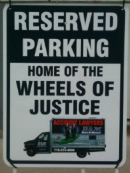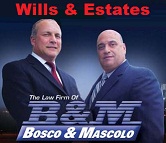The Premise - Conclusion model of Persuasion and who must pull Excalibur from the stone
 Friday, November 30, 2012 at 10:32AM
Friday, November 30, 2012 at 10:32AM What persuades? Since Aristotle, philosophers have tried to answer this question. It is a skill that a trial lawyer ought to have, right? If you want to put your lawyer on the spot, engage him or her in a discussion about persuasion. Ask your lawyer, 'What persuades?" A few lawyers have thought about persuasion and, thus, have an answer ready for this question. Most do not. Even many lawyers who try cases cannot articulate their theory of persuasion. They wing it, cross their fingers and hope for the best
Over the years we at the accident law firm of Bosco and Mascolo, Esqs. LLP have developed a theory of persuasion. We don't wing it. In this blog, from time to time, we shall talk about persuasion to prove to you that we are lawyers who have at least attempted to understand how to do it.
When you contemplate persuasion, the framework to have in mind is an argument from premise to conclusion. Reasoning starts at one or more premises. A premises is a step in a path that takes you to a conclusion. A conclusion is the destination. With this framework in mind, let us start our discussion of persuasion with the story of Excalibur, the legendary sword in the stone. With Excalibur we shall make an analogy. Excalibur is akin to the conclusion of an argument.
The first secret of persuasion is that we persuade ourselves. Nobody else can persuade us. For a person to be persuaded, that person must pull Excalibur out of the stone himself. If I try to persuade you by pulling Excalibur out of the stone myself and handing it to you, you will not become persuaded. Hence, a good trial lawyer who understands the pseudo science of persuasion attempts to get the jury to pull Excalibur, the conclusion, from the stone of premises themselves.
This is the first lesson in persuasion. More will come.
 persuasion in
persuasion in  Trials
Trials 





Reader Comments